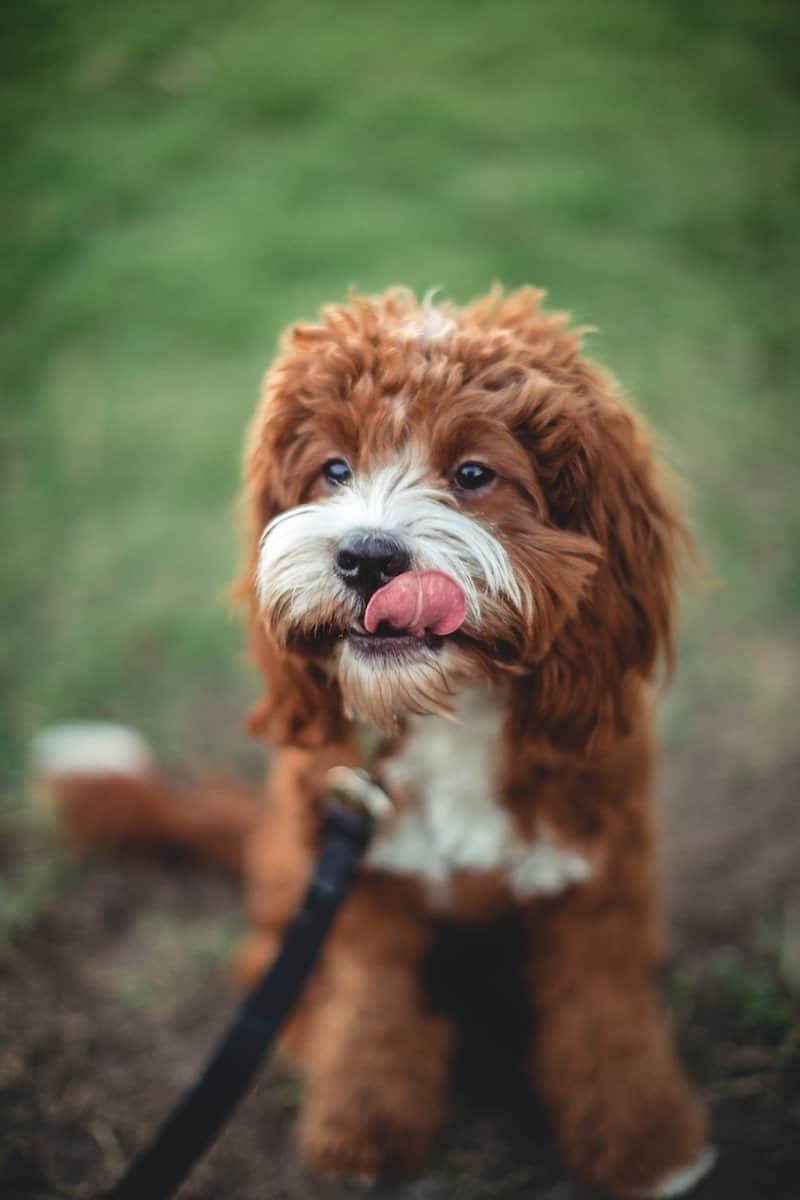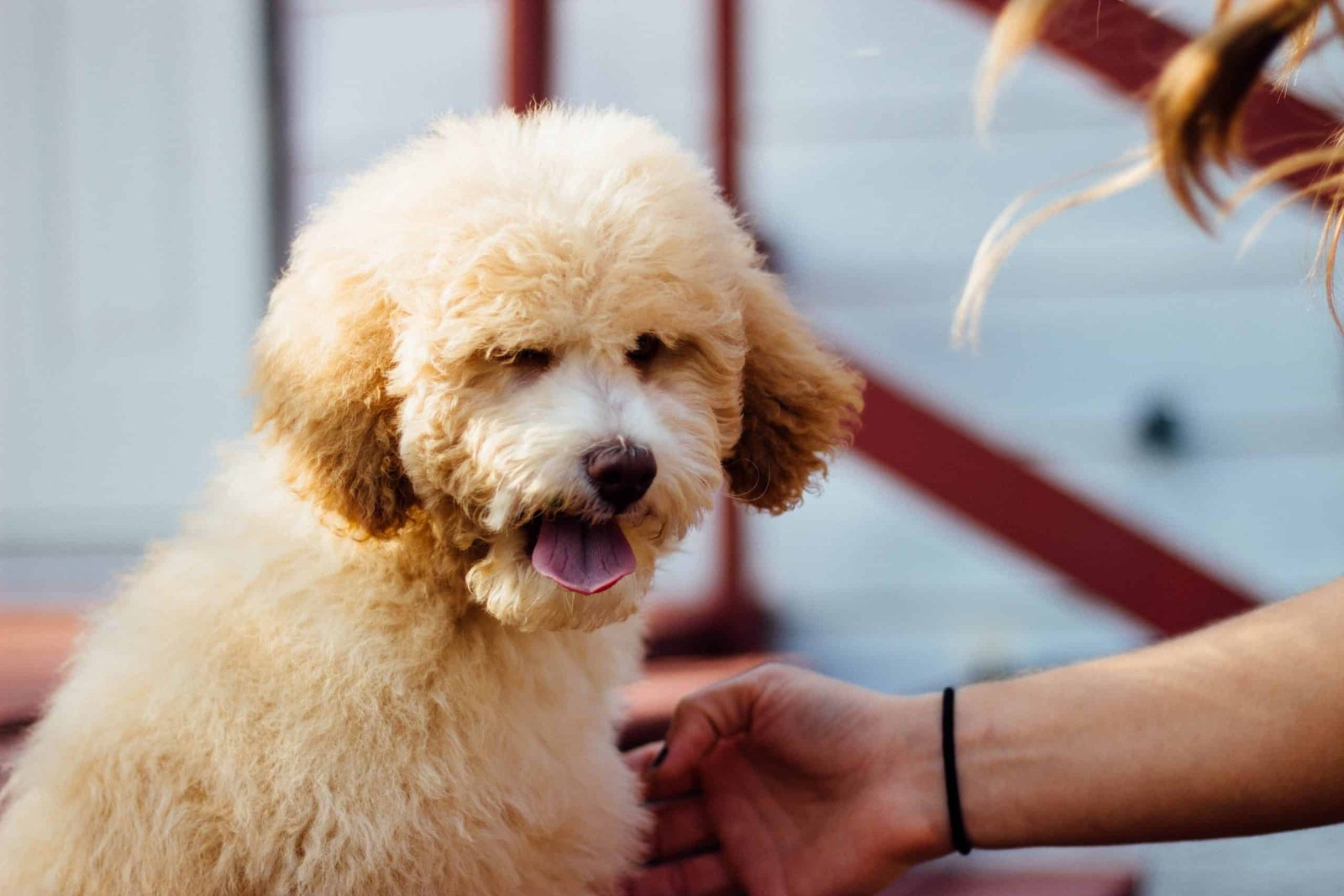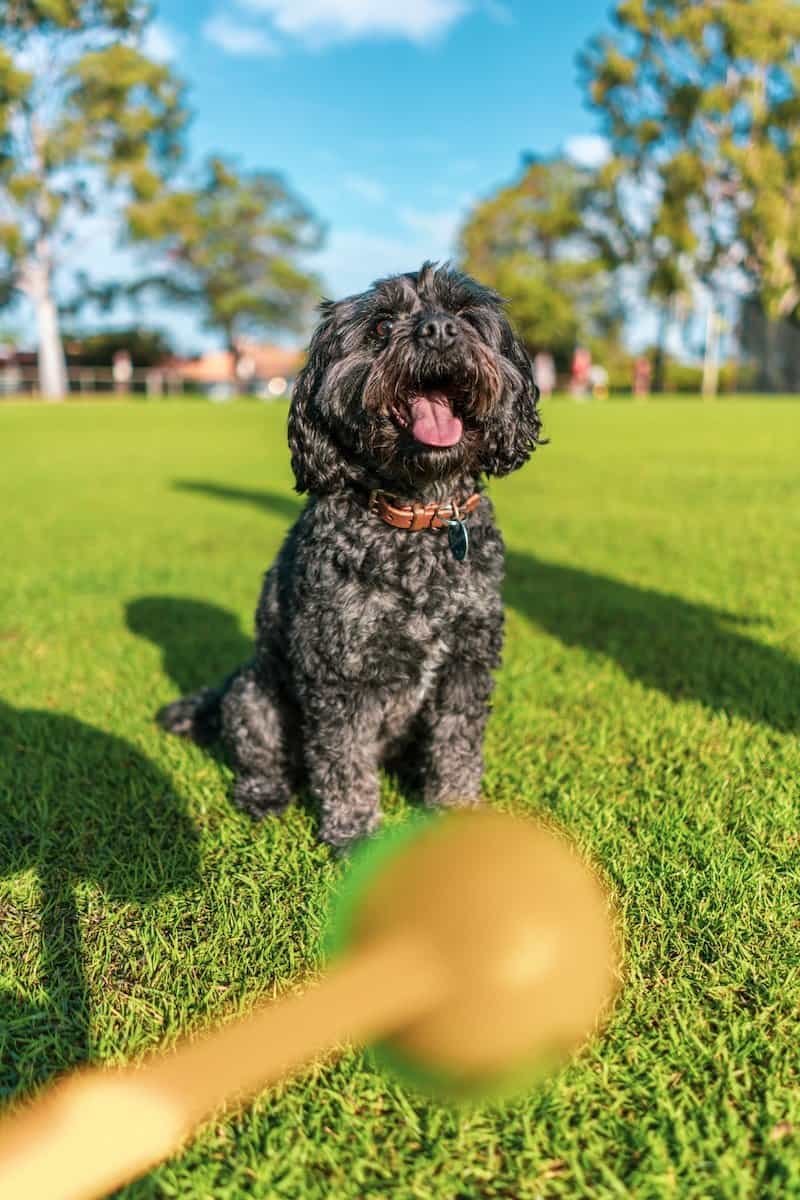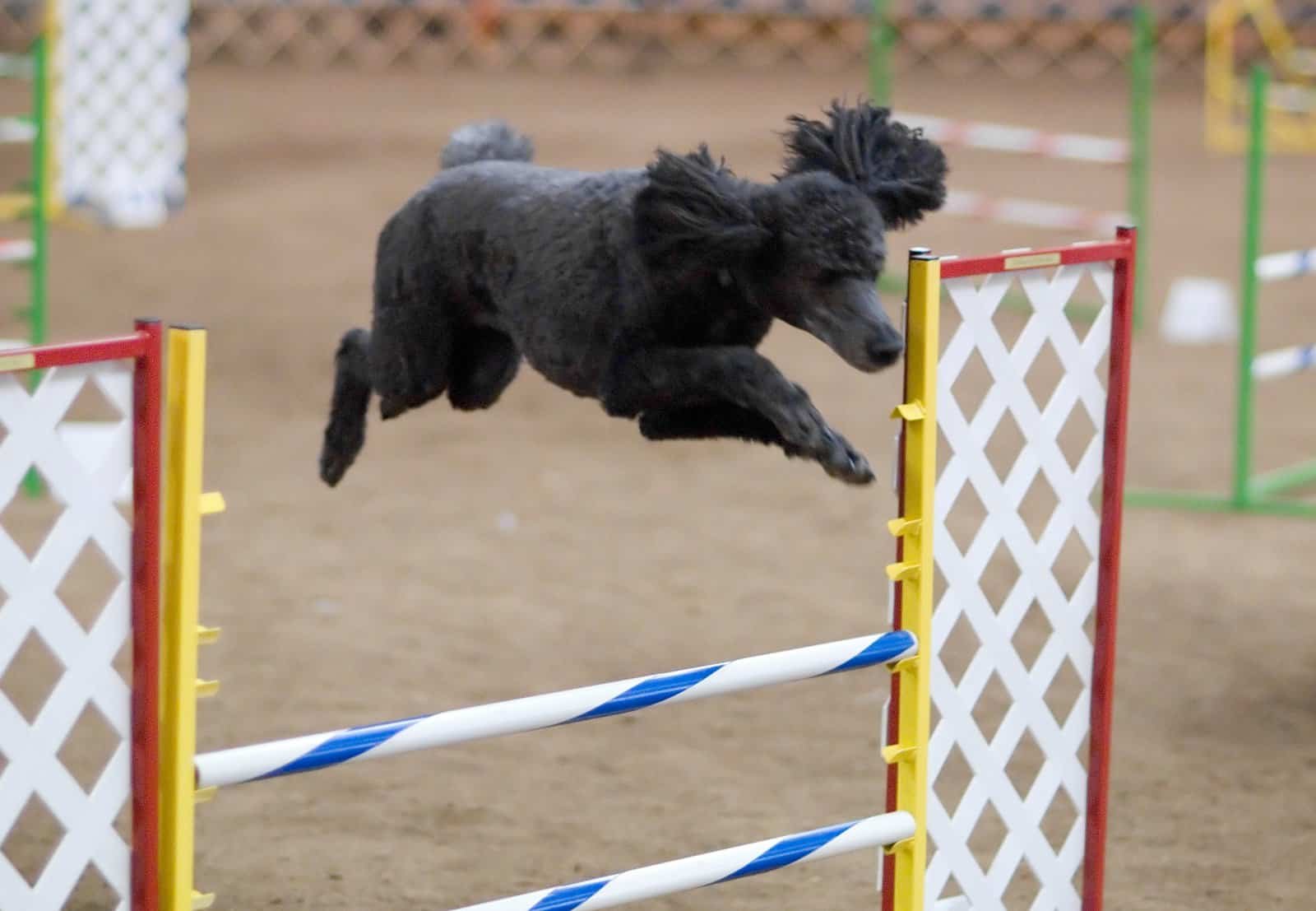
What is Agility Training?
Agility training is a popular and beneficial activity for dogs, including poodles. It involves navigating through a variety of obstacles and challenges, such as jumps, tunnels, weave poles, and contact obstacles, with the guidance and direction of their owners or trainers. Agility training not only provides physical exercise but also mental stimulation, making it an ideal activity for high-energy breeds like poodles.
The main objective of agility training is to improve a dog’s coordination, speed, and overall fitness level. It helps them develop strength, flexibility, and endurance, which are essential for optimal health and well-being. Additionally, agility training promotes mental sharpness, problem-solving abilities, and focus. Poodles, being an intelligent breed, excel in agility and enjoy the mental and physical challenge it provides.
Moreover, agility training enhances the bond between poodles and their owners. It requires effective communication, teamwork, and trust. Through positive reinforcement techniques and reward-based training methods, poodles can learn to follow basic commands, respond to verbal and visual cues, and maintain eye contact with their owners during the agility course. This improves obedience skills and strengthens the relationship between humans and their furry companions.
In summary, agility training offers a range of benefits for poodles, including physical exercise, mental stimulation, improved coordination and fitness, enhanced communication between dogs and owners, and strengthened bond and trust. It provides a fun and challenging activity that satisfies their natural instincts and energy levels, making it an ideal choice for poodle owners looking to engage their pets in a fulfilling and rewarding way.
Overview of Poodles
Poodles are a versatile and intelligent breed of dogs that come in two main sizes: standard and miniature. The standard Poodle stands over 15 inches tall at the shoulder, while the miniature Poodle is typically 10 to 15 inches tall. Despite their size differences, both types of Poodles share a remarkable intellect and a need for physical exercise.
Poodles are renowned for their intelligence, which makes them highly trainable and suitable for various activities, including agility training and tracking. Their ability to quickly learn and retain information allows them to excel in these challenging tasks. In agility training, Poodles can navigate obstacles such as weave poles, tire jumps, and contact obstacles, demonstrating their agility and problem-solving abilities. Similarly, their keen sense of smell and tracking instincts make them adept at tracking scents and finding hidden objects or individuals.
Beyond their present-day activities, Poodles have a rich historical significance. Originally bred as working dogs in Germany, they were used for retrieving waterfowl in hunting expeditions. Poodles’ strong swimming skills and webbed paws made them ideal companions for retrieving game from water. Additionally, during World War II, Poodles were employed by the military as search and rescue dogs.
In conclusion, Poodles are highly intelligent, adaptable, and well-suited for various activities that challenge their physical and mental abilities. Their versatility, combined with their historical significance, makes Poodles an exceptional breed for those seeking an intelligent and engaging companion. Whether it’s agility training, tracking, or simply providing loyal companionship, Poodles are a breed that offers both mental stimulation and a loving presence.
Benefits of Agility Training for Poodles
Agility training offers numerous benefits for poodles, both physically and mentally. This fun and challenging activity provide a range of advantages that help keep the breed happy and healthy.
Physical Exercise: Agility training provides poodles with a great workout. Running, jumping, and navigating through various obstacles such as weave poles and tire jumps helps them burn off excess energy and stay physically fit. This level of physical activity is essential for maintaining a healthy weight and promoting cardiovascular health.
Mental Stimulation: Poodles are highly intelligent dogs, and agility training engages their minds. Learning agility courses and following commands requires focus, problem-solving, and quick decision-making skills. This mental stimulation helps prevent boredom and the development of behavioral problems.
Socialization: Agility classes and clubs provide an excellent opportunity for poodles to socialize with other dogs and people. Interacting with different dogs of various breeds and sizes helps improve their social skills and build confidence in new environments.
Fitness Level Improvement: Regular agility training enhances a poodle’s overall fitness level. By participating in agility drills and exercises, they become stronger and more agile, increasing their stamina and endurance.
Bonding with Owners: Agility training offers a unique opportunity for poodles and their owners to bond. Through positive reinforcement and effective communication, the teamwork and trust between dog and owner are strengthened.
In conclusion, agility training is an excellent activity for poodles, offering them physical exercise, mental stimulation, socialization, improved fitness, and a stronger bond with their owners. Engaging in this exciting and challenging activity keeps poodles happy, healthy, and mentally sharp.
Agility Classes
Agility Classes: Enhancing Physical and Mental Well-being for Poodles
Agility classes offer poodles an excellent opportunity to engage in a fun and challenging activity that benefits them both physically and mentally. These classes involve guiding poodles through obstacle courses by following commands and navigating through hurdles like weave poles and tire jumps. By participating in agility training, poodles can enjoy a range of advantages that contribute to their overall well-being.
Physical Exercise: Agility classes provide poodles with a rigorous workout, incorporating activities such as running, jumping, and maneuvering through various obstacles. By engaging in these activities, poodles can burn off excess energy and maintain a healthy weight. Additionally, the cardiovascular nature of agility training promotes a strong heart and overall physical fitness.
Mental Stimulation: Poodles are known for their intelligence, and agility classes offer a mentally stimulating environment. Learning and navigating agility courses require focus, problem-solving, and quick decision-making skills. This mental engagement not only prevents boredom but also helps prevent the development of behavioral problems by keeping their minds occupied and stimulated.
Bonding and Socialization: Agility classes provide an excellent opportunity for poodles to bond with their owners and socialize with other dogs and people. Interacting with different dogs of various breeds and sizes helps improve their social skills and builds confidence in new environments. Through positive reinforcement and effective communication during training, the teamwork and trust between poodles and their owners can be strengthened.
In summary, agility classes offer poodles a well-rounded activity that incorporates physical exercise, mental stimulation, and socialization. By participating in these classes, poodles can enhance their overall well-being, build a stronger bond with their owners, and enjoy a fun and challenging activity tailored to their needs.
Types of Classes Available
When it comes to agility training for poodles, there are various types of classes available to cater to different skill levels and goals. These classes offer a wide range of activities and exercises to keep poodles engaged and challenged while improving their agility skills.
1. Basic Obedience: These classes focus on teaching poodles the fundamental commands and behaviors necessary for agility training. They cover basic obedience commands like sit, stay, and come, which are essential for navigating through agility courses effectively.
2. Agility Drills: These classes are designed to enhance specific agility skills and techniques. Poodles practice drills that improve their speed, agility, and coordination. Through repetitive exercises and targeted training, their overall performance and confidence in agility courses are enhanced.
3. Competitive Agility: For poodles with a competitive spirit, these classes prepare them for agility trials and competitions. Participants learn advanced techniques and strategies to master complex agility courses and expertly handle different obstacles. These classes help poodles and their owners develop the skills needed for a successful agility career.
4. Specific Obstacle Training: These classes focus on mastering particular agility obstacles such as weave poles, tire jumps, and broad jumps. Poodles learn how to navigate through weave poles with agility and precision, jump over tires with ease, and cover long distances with broad jumps.
By offering a variety of classes that cater to different skill levels and goals, agility training provides poodles with a well-rounded and stimulating experience. Whether they are just starting out or aiming for a competitive agility career, these classes ensure that poodles receive the necessary training and skills to excel in the sport.
Finding an Appropriate Class
Finding an Appropriate Class for Agility Training
To ensure the best outcome for your poodle’s agility training, it’s important to find an appropriate class that suits their needs. The process involves considering factors such as the dog’s age, skill level, and individual requirements. Here are some important considerations to keep in mind:
1. Class Format: Look for classes that offer a structured and well-organized format. This ensures that your poodle receives consistent training and progresses effectively. Classes should have a clear curriculum that covers both basic obedience and agility skills, providing a solid foundation for your furry companion.
2. Instructor Qualifications: The instructor’s expertise and experience play a vital role in your poodle’s training. Choose a class where instructors have extensive knowledge about agility training and can provide proper guidance and feedback. They should be skilled in positive reinforcement techniques and have the ability to tailor the training to suit your poodle’s unique needs.
3. Class Size: Consider the size of the class when selecting an agility training program. Smaller class sizes allow for more individualized attention and instruction. This ensures that your poodle gets the necessary feedback and support to progress effectively.
By carefully evaluating these factors, you can find an agility training class that meets your poodle’s specific needs. Remember to consider the class format, instructor’s qualifications, and class size to ensure a positive and productive training experience for both you and your poodle.
Benefits of Taking an Agility Class
Benefits of Taking an Agility Class for Poodles
Agility classes offer numerous advantages for poodles, providing a structured training environment that helps them develop their skills, build confidence, and improve their overall performance on the agility course. These classes create a setting where poodles can engage in challenging activities that not only stimulate their minds but also fulfill their need for physical exercise.
One of the key benefits of agility classes is the professional guidance they offer. Instructors with extensive knowledge of agility training provide expert advice and feedback, ensuring that poodles receive the proper techniques and skills necessary for success. The structured format of these classes allows for consistent training, helping poodles progress effectively and establish a solid foundation.
Additionally, attending agility classes grants poodles access to specialized agility equipment. From weave poles to tire jumps and upright poles, these courses offer a wide range of obstacles to practice and master. Moreover, these classes provide an excellent opportunity for poodles to socialize with other dogs and their owners, enhancing their social skills and promoting a sense of community.
To reap the full benefits, it is crucial to find an agility class that matches your poodle’s skill level and goals. Whether your poodle is a beginner or more advanced, there is an appropriate class to suit their needs. By enrolling in an agility class, you are providing your poodle with a fun and stimulating activity that will enhance their physical fitness and mental well-being. So don’t hesitate to embark on an agility journey with your poodle and watch them thrive!
Agility Clubs
Agility Clubs: Enhancing Physical and Mental Abilities for Poodles
Agility clubs provide a dynamic and engaging setting for poodles to unleash their full potential. These clubs offer a range of benefits that go beyond physical exercise, empowering poodles to develop their mental agility, social skills, and overall well-being. With a focus on positive reinforcement and interactive training, agility clubs create an environment that is both stimulating and enjoyable for our furry companions.
1. Professional Guidance and Skill Development
At agility clubs, poodles have the opportunity to learn from experienced instructors who possess extensive knowledge of agility training. These experts provide valuable guidance, ensuring that poodles receive proper techniques and skills necessary for success. With their expertise, instructors help poodles progress effectively, instilling them with confidence, focus, and the ability to navigate complex obstacles.
2. Varied and Specialized Equipment
Agility clubs offer a wide range of specialized equipment, including weave poles, tire jumps, and upright poles. By exposing poodles to various obstacles, these clubs allow for comprehensive training that targets different aspects of agility. This diversity not only builds physical strength and coordination but also sharpens the mental acuity required to navigate each obstacle with precision.
3. Socialization and Community
Agility clubs provide a unique opportunity for poodles to interact with other dogs and their owners. This socialization plays a crucial role in enhancing the overall development and well-being of poodles. By engaging in team-oriented activities and observing other dogs in action, poodles learn essential social skills, improve their confidence and adaptability, and develop a strong sense of camaraderie within the agility community.
In conclusion, agility clubs offer a holistic approach to poodle training, combining physical exercise with mental stimulation and socialization. With professional guidance, specialized equipment, and a sense of community, agility clubs provide an enriching experience that not only enhances poodles’ physical abilities but also nurtures their overall well-being. So, why not let your poodle embark on a journey of agility, fun, and growth? Join an agility club today and witness the transformative effects it has on your furry companion.
Joining a Local Club
Joining a local agility club offers poodle owners a plethora of advantages. These clubs provide a supportive community where enthusiasts can connect with fellow poodle lovers and share their experiences. When joining a club, poodle owners gain access to top-notch training facilities, experienced coaches, and numerous opportunities to participate in competitions, all of which contribute to their growth as agility enthusiasts.
At agility clubs, owners and their poodles can improve their skills through regular training and socialization activities. Training sessions are conducted in a supportive environment, allowing poodle owners to learn from experienced coaches who offer valuable guidance. With their expertise, these coaches help owners and their poodles develop the necessary techniques and skills to navigate various agility obstacles. By participating in training activities, owners and their poodles form strong bonds and improve their communication, resulting in enhanced teamwork and performance on the agility course.
Moreover, agility clubs offer a sense of community where poodle owners can connect with like-minded individuals who share their passion for agility. This camaraderie fosters a supportive and encouraging environment, facilitating the exchange of tips, tricks, and insights. Poodle owners can bond over their shared experiences, celebrate each other’s successes, and offer support during challenges.
In conclusion, joining a local agility club not only provides access to training facilities and experienced coaches but also enables poodle owners to become part of a strong and supportive community. Through regular training activities, owners and their poodles can improve their skills, strengthen their bond, and revel in the joy of agility together.
Advantages of Joining a Club
Joining an agility club offers a multitude of benefits for poodle owners and their furry companions. These clubs provide an ideal setting for training and socialization activities, allowing owners to enhance their skills while forming a strong bond with their poodles. The supportive environment of an agility club enables owners to learn from experienced coaches who offer valuable guidance, assisting them in mastering the techniques and skills required to conquer various agility obstacles. Through regular training sessions, owners and their poodles develop enhanced communication and teamwork, resulting in improved performance on the agility course.
One of the greatest advantages of joining an agility club is the opportunity to connect with like-minded individuals who share a passion for agility. These clubs foster a sense of community, where poodle owners can engage with fellow enthusiasts, exchange tips and insights, and celebrate each other’s successes. The camaraderie and support within the club environment create lasting friendships, making the club not just a place to train, but also a hub for social interaction and shared experiences.
Additionally, participating in agility competitions through the club can further enrich the experience. Competing at shows allows poodle owners to showcase their skills and receive feedback from experienced judges. The thrill of the competition, combined with the cheering audience, creates an exciting atmosphere that enhances the overall agility experience. Furthermore, the challenge and excitement of competing push both owners and poodles to continually improve their agility skills and performance.
In conclusion, joining an agility club offers numerous advantages, including skill improvement, community engagement, and the opportunity to compete. By becoming a part of a club, poodle owners can take their agility training to new heights and create lasting connections with fellow agility enthusiasts.
Participating in Competitions with a Club
Participating in Competitions with a Club: Enhancing the Agility Training Experience for Poodles
Joining an agility club not only offers poodle owners a platform to train their furry companions but also opens the door to a range of exciting opportunities. One such opportunity is the chance to participate in competitions, which can greatly enhance the agility training experience for poodles and their owners.
Club membership provides access to additional training resources that can help poodles hone their skills and reach their full potential. These resources may include expert trainers, specialized equipment, and structured training programs tailored to the needs of agility dogs. By leveraging these resources, owners can improve both their poodle’s agility skills and their own understanding of the sport.
Beyond the training aspect, club membership fosters a supportive community of like-minded individuals who share a passion for agility. This community not only provides a space for poodle owners to exchange tips and insights but also offers encouragement and camaraderie along the agility journey. Celebrating each other’s progress and successes creates a sense of belonging and motivation that can propel poodle teams forward.
Participating in competitions through the club takes the agility training experience to a new level. Showcasing their skills in front of experienced judges and a cheering audience instills a sense of achievement and excitement. The challenge of competition pushes poodles and their owners to continually improve their performance, becoming an invaluable source of growth and progress.
In conclusion, participating in competitions with a club enriches the agility training experience for poodles by providing access to additional training resources, building a supportive community, and offering opportunities to showcase skills. The combination of training and competition creates a well-rounded and fulfilling agility journey for poodles and their devoted owners.
Mixing Breeds & Energy Levels
When it comes to agility training, one factor that can greatly impact a poodle’s success is their energy level. While standard poodles may have a reputation for being more energetic, miniature poodles can also possess a surprising amount of agility and stamina. However, mixed breeds can bring a unique combination of traits to the table, making them both unpredictable and exciting to train.
Mixed breed poodles often inherit a variety of physical and mental characteristics from their parent breeds. This can create a diverse range of energy levels, which can be both a challenge and an advantage in agility training. Some mixed breed poodles may have a high energy level, requiring frequent physical exercise to release excess energy and maintain focus during training sessions. On the other hand, some mixed breeds may have a calmer disposition, requiring different strategies to motivate and engage them in agility exercises.
Understanding the specific energy level of a mixed breed poodle is essential to tailor their agility training program effectively. By recognizing their individual needs, poodle owners can adjust training intensity, duration, and frequency accordingly. This targeted approach ensures that the training sessions are stimulating enough to keep the poodle mentally and physically engaged, without overwhelming or exhausting them.
Regardless of their energy level, mixed breed poodles can thrive in agility training. Their unique combination of traits often results in an intelligent breed with a diverse skill set, making them adaptable and quick learners. With the right training techniques, mixed breed poodles can become agile and nimble champions in agility competitions, impressing both judges and audiences with their natural abilities and enthusiasm for the sport.
Mixing Small and Large Breeds in the Same Class
When it comes to agility classes, mixing small and large dog breeds together can present both challenges and opportunities. Training sessions that cater to the specific needs of each size group can ensure a safe and inclusive environment for all dogs involved.
Considerations for Training Small and Large Breeds Together
In an agility class with mixed breeds, it is important to consider the physical differences between small and large dogs. Small dogs may require adjustments to the height and spacing of obstacles to ensure they can navigate them safely and comfortably. On the other hand, larger dogs may need additional space to maneuver their bodies around equipment.
Strategies for Training Small and Large Breeds Together
To create a cohesive training environment, instructors can divide the class into small and large breed groups for certain exercises. This allows for targeted instruction and enables trainers to address the unique challenges faced by each size group.
Adjusting Equipment and Exercises
In an agility class with mixed breeds, it is essential to adjust the equipment and exercises to accommodate the varying sizes of dogs. For small dogs, obstacles can be set at lower heights and narrower widths. This ensures that they can successfully clear jumps and navigate contact obstacles without risking injury. For larger dogs, obstacles can be set at standard heights and widths, providing them with an appropriate level of challenge.
Creating a safe and inclusive agility class for mixed breed dogs involves recognizing the physical differences between small and large dogs. By making necessary adjustments to equipment and exercises, trainers can ensure that all dogs have the opportunity to participate and succeed in their agility training journey.
Adjusting to Different Energy Levels
Adjusting to Different Energy Levels in Agility Training for Poodles
Adjusting agility training to accommodate the varying energy levels of poodles is crucial for successful and effective sessions. Understanding these energy levels and tailoring the training accordingly can enhance the overall experience for both the dog and the trainer.
Importance of Energy Level Understanding
Poodles, whether standard or miniature, possess different energy levels. Some may be high-energy and always ready for action, while others may have a more moderate or even lower energy level. Recognizing the energy level of each poodle allows for a personalized training approach that meets their specific needs.
Strategies and Exercises for Different Energy Levels
To address different energy levels, trainers can implement various strategies. For high-energy poodles, longer training sessions with more intense physical exercise can help burn off excess energy. This can include advanced agility drills, extended obstacle courses, and incorporating tire jumps and broad jumps.
On the other hand, poodles with lower energy levels may benefit from shorter training sessions that focus on mental stimulation. This can involve introducing more complex obstacle courses, utilizing contact obstacles and weave poles, and incorporating problem-solving exercises with the use of cardboard boxes or PVC pipes.
Regardless of energy level, incorporating positive reinforcement and maintaining eye contact during training is vital. This helps keep the poodle engaged and motivated throughout the session.
By adjusting to different energy levels and employing suitable strategies and exercises, agility training for poodles can be both enjoyable and beneficial. It allows them to develop physical abilities, enhance focus, and promote overall well-being while forging a stronger bond with their devoted trainers.
Positive Reinforcement & Eye Contact
Building a Stronger Bond in Agility Training for Poodles
In agility training for poodles, positive reinforcement and eye contact play fundamental roles in enhancing the training experience and fostering a strong bond between the handler and the dog. These techniques not only help in teaching the required commands and skills but also encourage enthusiasm and create a harmonious connection.
Positive reinforcement, using rewards such as treats or praise, is a highly effective method in agility training. By offering positive reinforcement when the poodle successfully completes a task or follows a command, they associate the activity with a positive experience. This builds enthusiasm and motivation, making them more eager to participate and excel in the training sessions. Furthermore, positive reinforcement helps establish trust and confidence between the handler and the poodle, strengthening their bond.
Eye contact is another crucial element in agility training. When the poodle maintains eye contact with their handler, it ensures they are fully engaged and focused on the task at hand. It establishes clear communication and allows for better coordination during training. Additionally, eye contact helps the poodle anticipate their handler’s next move, enabling them to respond faster and more accurately to commands.
To teach eye contact and improve impulse control, various exercises can be incorporated into agility training. One effective exercise is the “watch me” command, where the poodle is trained to maintain eye contact with the handler on cue. By rewarding the poodle each time they respond to the command with focused eye contact, this behavior becomes reinforced.
Recall games are also valuable in increasing attention and reinforcing eye contact. Starting in a low-distraction environment, the handler can call the poodle’s name, rewarding them with praise and treats when they maintain eye contact as they come running back. Gradually, distractions can be added to challenge the poodle’s focus and impulse control, further strengthening their ability to maintain eye contact amidst stimulating environments.
In summary, positive reinforcement and eye contact are integral to successful agility training for poodles. By utilizing these techniques, handlers can not only enhance the poodle’s skills and performance in agility but also deepen their bond and enthusiasm, creating a rewarding experience for both the dog and the trainer.




